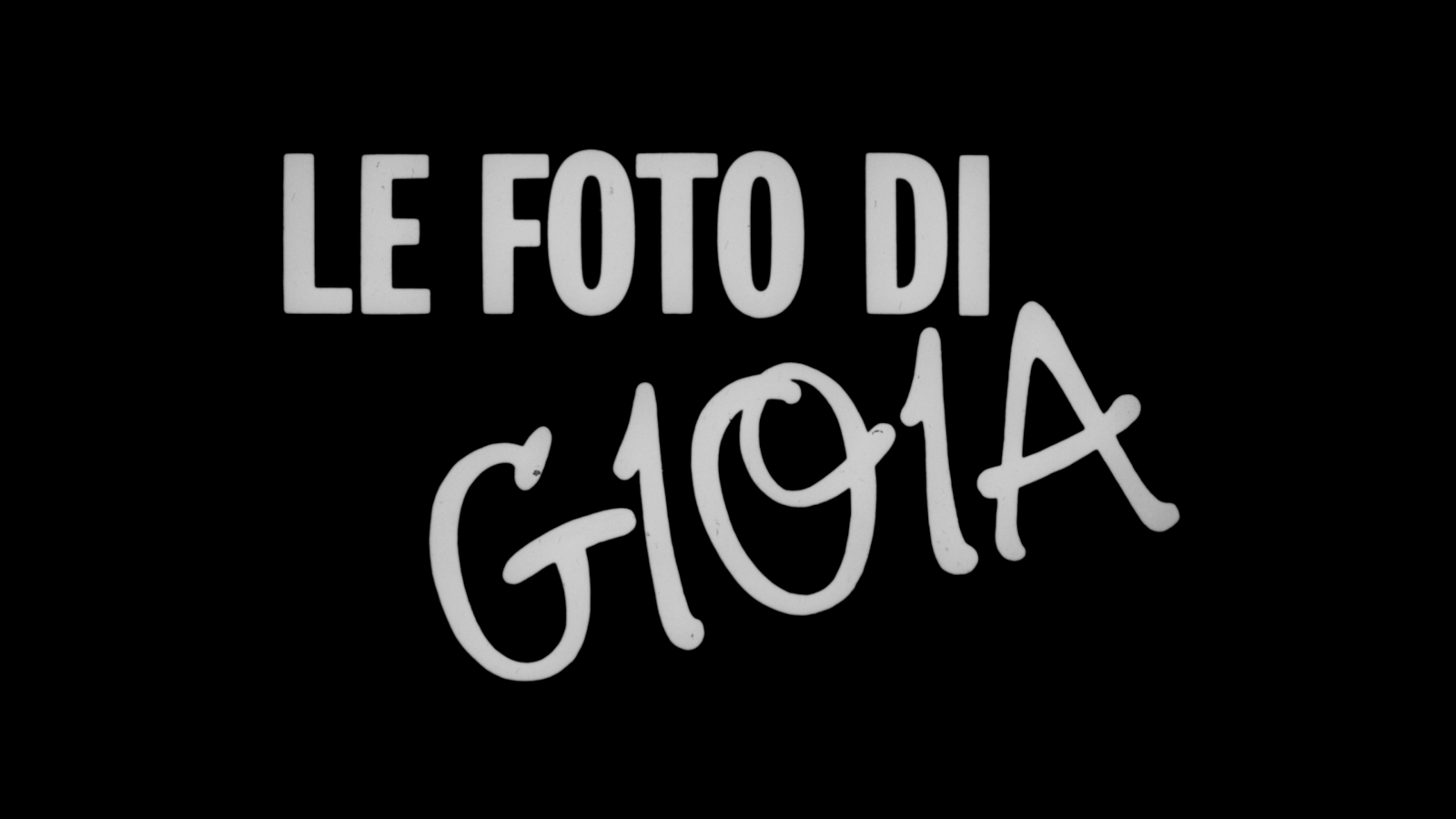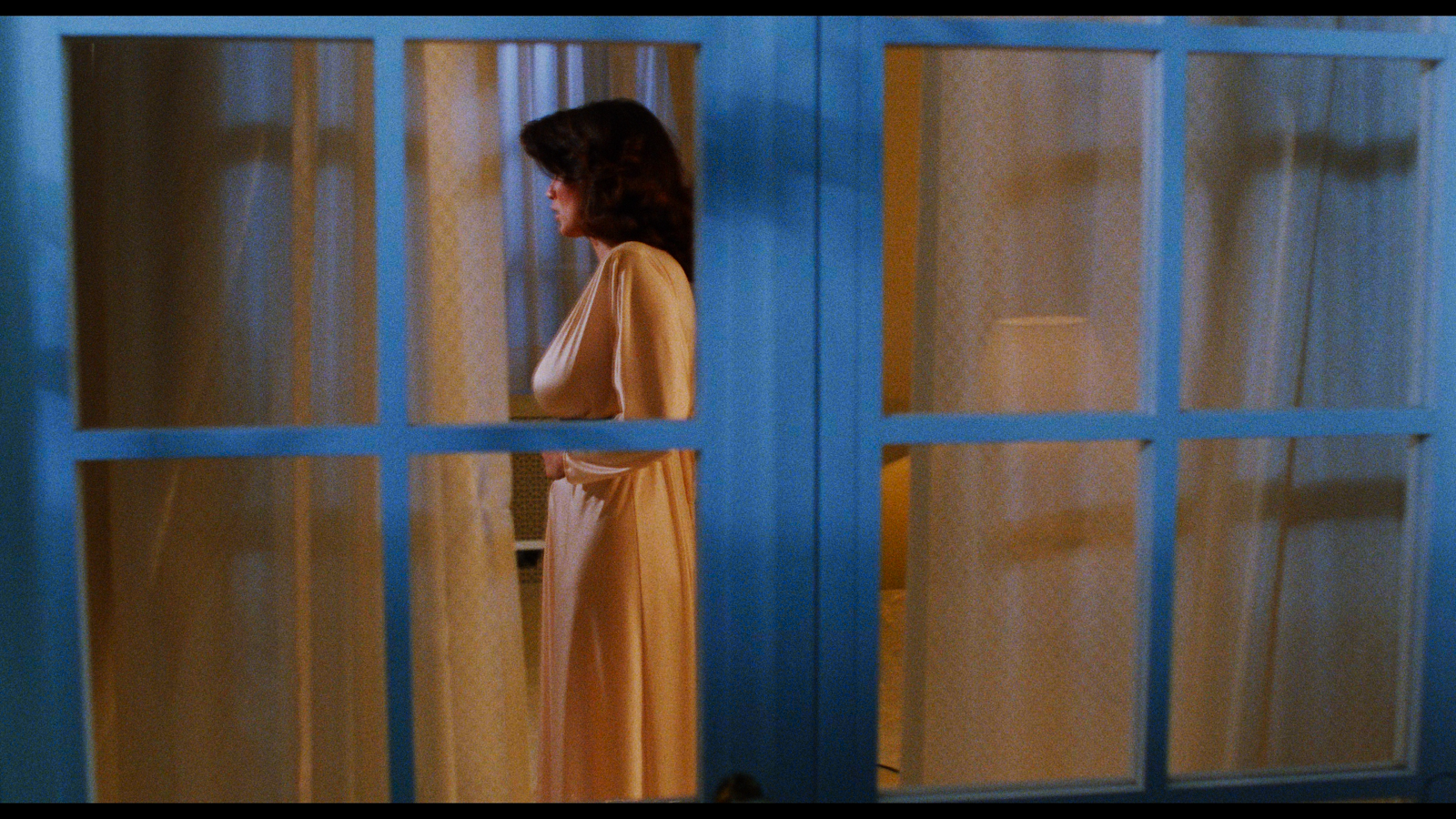Delirium: Photo of Gioia – Vinegar Syndrome (4k UHD/Blu-ray Combo)
Theatrical Release Date: Italy, 1987
Director: Lamberto Bava
Writers: Luciano Martino, Gianfranco Clerici, Daniele Stroppa
Cast: Serena Grandi, Daria Nicolodi, Vanni Corbellini, David Brandon, George Eastman, Trine Michelsen, Karl Zinny, Lino Salemme, Sabrina Salerno, Capucine
Release Date: September 24th, 2024
Approximate Running Time: 94 Minutes 26 Seconds
Aspect Ratio: 1.85:1 Widescreen / 2160 Progressive / HEVC / H.265 / HDR10
Rating: NR
Sound: DTS-HD Stereo Italian, DTS-HD Stereo English
Subtitles: English, English SDH
Region Coding: Region Free
Retail Price: $54.98
"Gioia made her fortune working as a high-class call girl, but now she runs one of Italy’s top erotic photo magazines for which only the most beautiful women are hired as models. When a perverted psychopath begins killing them off one by one, sending Gioia macabrely staged photos of their corpses, posed to mirror their latest centerfolds, Gioia realizes that to put an end to the horrors and unmask the murderer, she will need to come to terms with a secret in her past which has resulted in all of the bloodshed…" - synopsis provided by the distributor
Video: 5/5 (4K UHD), 4.5/5 (Blu-ray)
Here’s the information provided about the transfer, "Newly scanned & restored in 4K from its 35mm original camera negative."
Delirium: Photo of Gioia comes on a 66 GB dual layer 4K UHD
Disc Size: 61.4 GB
Feature: 60.5 GB
The source looks excellent; when compared to this film's previous home media releases, it is not even close. Flesh tones look healthy, colors look vibrant, image clarity, contrast, black levels, and compression are solid, and the image always retains an organic look.
Delirium: Photo of Gioia comes on a 50 GB dual layer Blu-ray.
Disc Size: 46.3 GB
Feature: 27.4 GB
The Blu-ray included as part of this release uses the same source that was used for the 4K UHD’s transfer.
Audio: 4.5/5 (DTS-HD Stereo Italian), 3.5/5 (DTS-HD Stereo English)
This release comes with two audio options, a DTS-HD stereo mix in Italian, and a DTS-HD stereo mix in English. The Italian language track is in great shape; dialog always comes through clearly, and everything sounds balanced and robust when it should. In comparison, the English-language track sounds flat. Included are removable English subtitles for the Italian language track and removable English SDH for the English language track.
Extras:
Extras on the 4K UHD disc include an audio commentary with film historians Eugenio Ercolani and Troy Howarth.
Extras on the Blu-ray disc include an archival interview with art director Antonello Geleng titled Inside Delirium (12 minutes 50 seconds, Dolby Digital stereo Italian with non-removable English subtitles), an archival interview with director Lamberto Bava titled Snapshots of a Murder (18 minutes 51 seconds, Dolby Digital stereo Italian with non-removable English subtitles), an archival interview with actor Luigi Montefiori aka George Eastman titled Stories from the Bathtub (8 minutes 58 seconds, Dolby Digital stereo Italian with non-removable English subtitles), an archival interview with cinematographer Gianlorenzo Battaglia titled Murders in Red and Blue (8 minutes 32 seconds, Dolby Digital stereo Italian with non-removable English subtitles), an archival interview with Lamberto Bava (12 minutes 42 seconds, Dolby Digital stereo Italian with non-removable English subtitles), an archival interview with Luigi Montefiori aka George Eastman (8 minutes 40 seconds, Dolby Digital stereo Italian with non-removable English subtitles), an archival interview with actor David Brandon (12 minutes 14 seconds, Dolby Digital stereo Italian with non-removable English subtitles), an interview with costume designer Nicoletta Ercole titled Dressing Gioia (19 minutes 49 seconds, Dolby Digital stereo Italian with removable English subtitles), an interview with first assistant director Roberto Palmerini titled Those Who Bite and Those Who Don't (23 minutes 32 seconds, Dolby Digital stereo Italian with removable English subtitles), an interview with Luigi Montefiori aka George Eastman titled Two Meters of Fear (16 minutes 55 seconds, Dolby Digital stereo Italian with removable English subtitles), an interview with actor Karl Zinny titled Peeping Karl (16 minutes 58 seconds, Dolby Digital stereo Italian with removable English subtitles), an interview with David Brandon titled Meet the Photographer (16 minutes 34 seconds, Dolby Digital stereo English, no subtitles), a documentary titled Nightmare Delirium, featuring interviews with Lamberto Bava, Luigi Montefiori (aka George Eastman), Antonello Geleng and Gianlorenzo Battaglia (40 minutes 589 seconds, Dolby Digital stereo Italian with removable English subtitles), and an audio commentary with Eugenio Ercolani and Troy Howarth.
Other extras include reversible cover art and spot gloss slipcover (limited to 5,000 units).
Summary:
Out of all of the directors who consistently found work in 1980s Italian genre cinema, Lamberto Bava’s filmography is the most interesting. Instead of focusing on horror, he worked in just about every genre of cinema. That said, he’s still most remembered for directing two Demons films and A Blade in the Dark, his first foray into the giallo genre.
A psychopath targets a former fashion model who inherited a men’s magazine from her recently deceased husband.
Though Delirium: Photo of Gioia has many of the core elements synonymous with the giallo genre, it also draws from Alfred Hitchcock, notably Rear Window, and some surrealism, moments where the killer envisions its victims with an eyeball head or insect head. The protagonist is never in immediate danger; despite being the main target, the killer kills people close to her, slowly breaking down her sanity. That said, the narrative is filled with an ample amount of red herrings and moments of misdirection, and a wild finale that provides a perfect resolution to the events that have unfolded.
Delirium: The photo of Gioia takes place in a familiar setting in the world of fashion; the definitive example of a giallo in this setting is Blood and Black Lace, directed by Lamberto Bava’s father, Mario Bava. Besides setting, these two films are like night and day, especially when it comes to tone. Blood and Black Lace is filled with tension; Delirium: Photo of Gioia is a more salacious film. Though set in the world of fashion, another area where Delirium: Photo of Gioia sticks out is decor, which dates it.
Despite not being the first choice for the role of the protagonist, Serena Grandi (Miranda), she delivers a very capable performance. Knowing the limitations of his lead actress, Lamberto Bava lets her more than ample physical assets do all the heavy lifting. On a side note, Edwige French (The Strange Vice of Mrs. Wardh) was the producer’s original choice for the protagonist. Also to Lamberto Bava’s credit, he surrounds Serena Grandi with a solid supporting cast who are all great in their roles.
The 1980s were a transitional time for Italian genre cinema, and though these films always worked with anemic resources, things were getting even tighter. That said, from a production standpoint, Lamberto Bava really takes advantage of what he has to work with. And though there are some glaring shortcomings, there are way more positives. This is most clear when it comes to the stylish visuals and well-executed moments of carnage. Ultimately, Delirium: Photo of Gioia is one of the better giallos from the 1980s, not directed by Dario Argento.
Delirium: Photo of Gioia gets an excellent release from Vinegar Syndrome that comes with a solid audio/video presentation, and a wealth of insightful extras, highly recommended.
Note about the 4K screenshots: It is not possible to make Dolby Vision or HDR10 screenshots that faithfully match the experience of watching a film in motion on a TV. Instead of not having any screenshots, all of the 4K screenshots are m2ts taken with a MPC-HC player and lossless PNGs.
Written by Michael Den Boer

















No comments:
Post a Comment
Note: Only a member of this blog may post a comment.